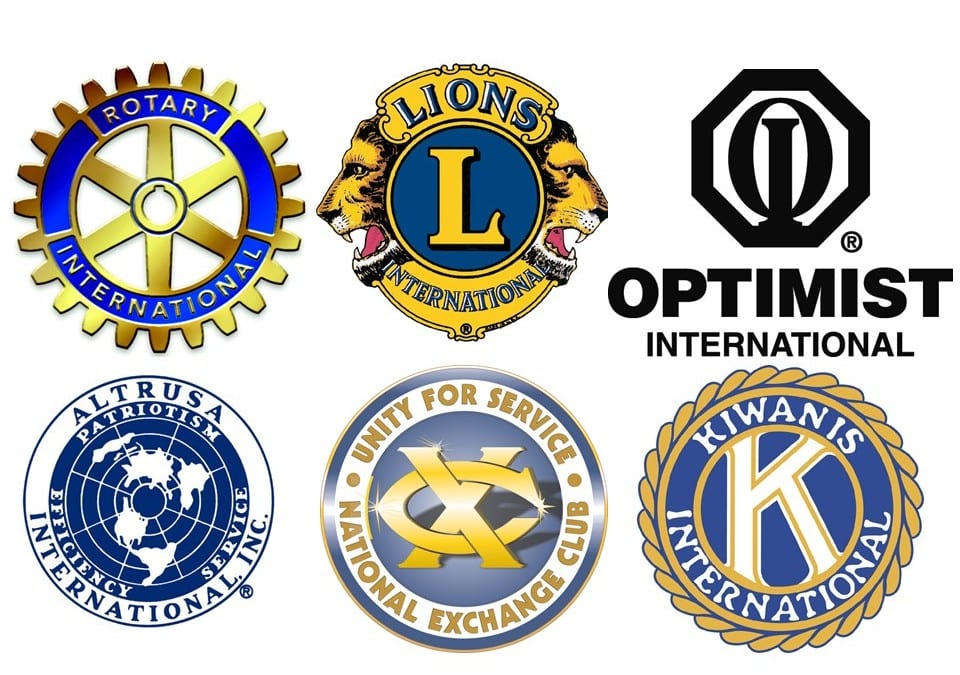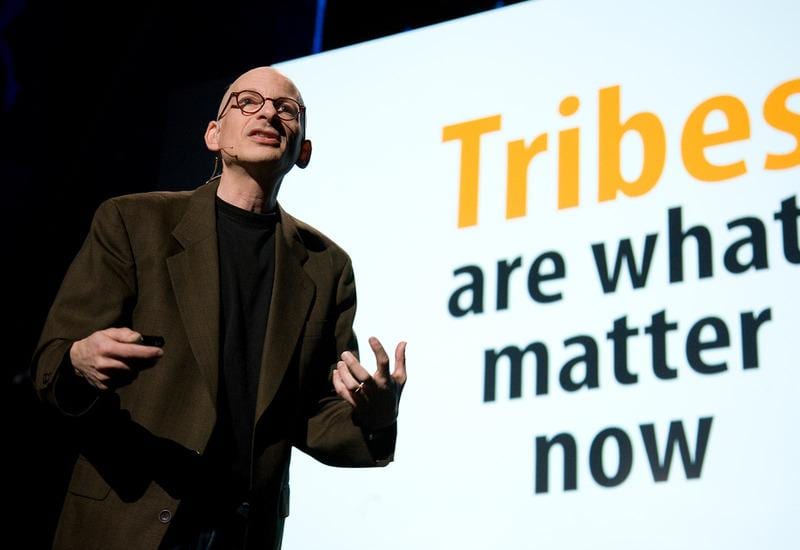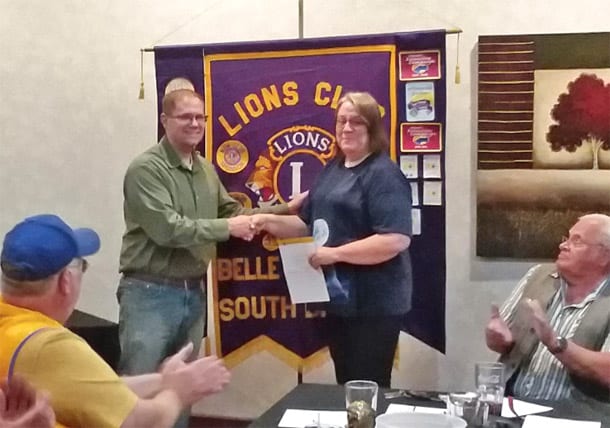Service clubs make our communities stronger, more interesting, and more engaging. So why are they dying? What can we do about it?
Nothing more American than a service club. Rotary, Lions, Kiwanis, IOOF, Altrusa, Shriners. Frenchman Alexis de Tocqueville rode all over the United States in the 1830s and was struck by the influence of religious congregations, fraternal associations, civic organizations, and secret societies, on American democracy and concluded that they made communities stronger, more interesting, and more engaged. So why our service clubs are dying?

All of these service clubs, once the backbone of community life in America, have been in significant decline over the past 2-3 decades. It is not that our clubs have changed. America has changed. Thus the imperative is for us to reinvent our clubs for a new America.
Declining Social Capital
In his 2000 book, “Bowling Alone: The Collapse and Revival of American Community,” Robert Putnam documented that attending club meetings, such as those held by Rotary and Kiwanis groups, has declined by 58 percent in the period 1975-2000. This trend continued and even accelerated in the 21st century. Putnam notes it’s part of an overall trend by Americans who also have 43 percent fewer family dinners. Thirty-five percent fewer of us have friends who drop in to see us at our homes.
Pick an organization and the numbers are telling. In the past two decades Rotary down 20%, Jaycees down 64%, Masons down 76%. Recalling de Tocqueville’s observation about the role our clubs play in civil society, this decline represents a tangible loss to the community. The question remains, ‘Where do we go from here?”
Since most service club leaders are in office but for one year, they shoot for short term quick fixes such as a membership drive. However, for most of our service clubs the issue is not recruitment but retention. Rotary averages 44,000 new members per year and loses an average of 51,000. They cannot keep members. If businesses are not keeping customers, the leaders generally make it top priority to find out why and correct the reasons. If they fail, they most likely will not be leaders for very long. Common sense says the same principle should apply to service clubs as well.
Think Tribes, Not Community
The classic definition of a community is associated with a physical place, hence many of our service clubs are branded with a ‘place’ such as Jamestown Lions Club. But emerging generations of Americans now define community by their affinities: the gay community or the tech community. Even college alumni groups now tout themselves like independent countries such as Spartan Nation at Michigan State University.

Seth Godin is an entrepreneur who ruminates on marketing in the digital age. Author of several best-selling books, Godin argues that digital life has ended traditional mass communication and replaced it with an ancient human social unit, The Tribe. These are groupings of people founded on shared ideals and values. As such, tribes give ordinary people the power to lead and make big changes.
In the new world, what people desire most is an opportunity to connect with one another. People like bonding with other people. It’s human nature. If we create opportunities for people to connect, they’ll open up and feel more comfortable. As they do, they’ll invite us into their lives and will introduce us to their friends. Then their friends become our family, our tribe. One by one we rebuild our clubs.
The data is so overwhelmingly convincing. One-half of charitable giving in the United States is driven not by what people care about, it is driven by what their friends and family care about. Consider the charity walk or bike ride. Most of those involved have little driving passion for the issue at hand, but join up to walk as part of a team organized by a friend or family member. It’s their community. The service clubs which will thrive in this new era are the ones who build out their tribe.

The speed of American life has picked up. While we are not working that much more than previous generations, we are spending vastly more time in what might be called “‘structured leisure activities“’. This is especially true for families with children. For them, time is more prized than talent or treasure. For two-parent families, both are often working and sharing household and child-rearing duties.
So what will attract them is not so much our mission, but how we can add to the quality of their lives. Their time is precious. So how can we adapt in order to make ourselves more welcoming to this emerging America?
Build An An Informal Atmosphere
Is the format of our club outdated? Is the weekly lunch a productive format? Are the rituals in our meeting making sense to younger Americans? Many try to side step or ignore these impediments rather that deal with them. That’s human nature as the most powerful force in the world is the status quo.
But Americans now connect on-line so don’t need the time investment of a weekly meeting in order to network. Leaders must identify and remove obstacles. Is the structure of our club meetings an obstacle to involvement? One thing is abundantly clear, what emerging generations want in physical meetings is for the environment to be fundamentally social, fundamentally conversational and fundamentally less formal.

Enable Them To Bring The Whole Family
One of the encouraging trends in modern America is how men have taken a much more active role in child rearing. Some of this is driven by women’s increasing role in the workplace and some by men desiring to play a more intimate role in the development of their sons and daughters.
These two-parent, two-career families have higher than average incomes and should be a priority to our recruitment strategy. They earn more and are more active than other demographics. If we want to get them, we have to offer a milieu that permits and engages their children as well, for they will not give up valuable family time for anyone. So, does our club offer a family-friendly environment?
TED talks have become the gold standard among young professionals for these sessions arouse followers’ thoughts and imagination, as well as stimulating their ability to identify and solve problems creatively. People gravitate to places containing others who awaken their curiosity, challenge them to think and learn, and encourage openness to new, inspiring ideas and alternatives.
While we may not be able to book high-level speakers, we can look at altering meeting formats. How about facilitated discussions around a pressing societal issue? How about reflective exercises which engage members to think deeply about a topic?
These ingredients are essential to creating an environment where people are willing to invest their time. Intellectual stimulation is defined as encouraging innovation and creativity, as well as critical thinking and problem-solving. Intellectual stimulation involves arousing followers’ thoughts and imagination, as well as stimulating their ability to identify and solve problems creatively
People love environs that awaken their curiosity, challenge them to think and learn, plus encourage openness to new, inspiring ideas and alternatives. These elements are essential to pulling in the emerging generations and thus ensure club success.

Let Them ReThink You
It’s not ‘Come do what we do’, it’s ‘What do you want to do?” Can our club be an incubator for young creatives to develop new and interesting ways to address our traditional issues?
One aspect of emerging generations is their desire to have an impact now. It means they will not wait 5 years to be elected Chair of the Fundraising Committee before seeing their ideas in action. If it’s not happening today, they’ll walk away.
Victor Hwang in his book, The Rainforest, metaphorically notes that most of us were trained to manage farms. By this he means our approach to anything is that we know what we want to grow, know when to plant the seeds, plant in straight lines, kill anything that looks like a weed, know when to harvest and can anticipate roughly our yield. The Rainforest, by comparison, is a chaotic environment where all sorts of genetic mutations are taking place and everything looks like a weed.
Hwang’s point is that we need more Rainforests. But that means relinquishing some measure of control. Not always easy when we have 60-80-100 years of tradition behind us. Yet, by allowing emerging leaders to reinvent our club we can navigate a path to securing our survival.
Inventing The American Future
Service clubs are an American innovation that have evolved into a worldwide institution. While vibrant across the globe, the loss of membership in the United States represents a loss of social capital and civic engagement. Today potential members are constrained by lack of time. In addition, they may not see much use in an organization whose prestige and vitality is in question. It is imperative we reinvent. That may involve passing the torch and allowing an emerging generation of leaders to reinvent our clubs according to their needs. The alternative may be irrelevance and obscurity.
# # #
The author is a member of the Rotary Club Of Oregon City, OR If you’re in town on a Wednesday afternoon, come join us for lunch.

Hi Michael,
I am a relatively recent Rotarian (2 years). I did not join to be in a club. I joined to find people who shared my passion to want to make the world a better place. I almost quit after 2 months when I discovered my club was down 75% in members in about 2 years. I studied all I could find about Rotary to decide whether this organization had the right ideals and concluded that it did. I then visited 20 clubs in 4 countries to understand difference between clubs that are flourishing (many outside US are) and clubs that are languishing.
I decided Rotary was worth fighting for an now I will be District Membership Chair and Public Image Director next year.
The core of our strategy is built around the idea of PRIP Clem Renauf (came up with end Polio idea which passed to his successor Carlos Canseco), who described Rotary as an organization that provides ordinary people with extraordinary opportunities to do more with their lives than they ever dreamed possible. We are challenging everyone from Rotarians to EarlyActors to “Dare to be great.”
We look to put causes ahead of club. We seek to attract people who want to put more meaning in their lives (and then be sure we give them the opportunity). We are looking to collaborate statewide so that we can take on projects with greater impact (and therefore newsworthiness). We believe this will also give us more clout with the media and potential supporters/donors thereby enabling us to do more good which will make us more relevant to more people.
I would be interested in exchanging thoughts with you.
I think the objective should be to meet people from all walks of life who “may” be able to help others reach their goals. If you contain yourself to special interests this flies in the face of that idea. Community organizations should be a networking tool. Special interests stay to themselves
I guess what I am saying is a melting pot concept is better.
After some 15 years as a Rotarian in Korea, I have chosen not to renew membership for the coming Rotary year. I’m taking a one-year vacation – maybe longer, after holding various positions, ranging from club vice president, programs chair, membership chair, etc.
What strikes me is the inadequate concern for many service club to provide meaningful experiences/responsibilities for the rank and file. Too often work, glory and responsibility is overly concentrated among a few, top members while these same few people are remarkably inept or disinterested in delegating duties functioning committees. So much so, committees tend to be one-person committees.
Furthermore, today “membership” roles should be more accurately labeled as “recruitment.” There is remarkably little, ongoing concern about membership maintenance and retention. It is just constant banging the drum for new members. But in so doing, without sincere retention programs in place, all membership chairpeople are doing is exposing more and more people to unsatisfactory experiences and thereby promoting less-than-positive word-of-mouth PR about Rotary or whatever service group.
Rotary International and others need to get serious and rethink what they are doing with their constant downward pressure to get membership numbers (and annual membership fees!) up.
A common analogy is that each organization has holes in its bucket representing deaths, transfers and other reasons for membership numbers to decrease, so constantly we need to add more water in the form of new members. Fine, but if there is no concern in filling in at least some of the bucket holes and preventing other holes from enlarging, we are no better than modern day Sisyphuses.
Unfortunately, as obvious these observations may be, over several years in Seoul, at best I’ve been able to witness is lip service. Recently I met with a current Rotarian club president from a south Asian nation. The club is young and he is one of the charter members. The membership is currently down by more than half from its original number. But he is not greatly concerned. His thinking is building up his club in terms of quality rather than quantity, regardless of pressure from his district to go out and heavily recruit new members. This wise man’s philosophy is let’s do all the right things well and make our club something wonderful so that people will come to us, asking to join, rather than spending much of our resources recruiting members at the expense of the core missions of Rotary. I cannot agree more.
Build your club right and it will rightfully generate a charismatic reputation. Build it shabbily and all you will be doing by recruitment is spreading the word that Rotary or whatever is no longer relevant. If you build it right, they will come. But if one is quick to advertise the proverbial baseball field with a missing base and weeds in the infield, don’t expect folks to come back – nor will they say positive things to others about your club!
We are an eclub. Looking forward to understanding far more on retention as well as bringing in people who will remain in the club. We do not have ‘formal’ meetings; the board meets on line each month with members being welcome to join in. Our members not on the Board are able to fulfill their service by working with other Rotary Club projects or other non profits.
Even with our flow at your own speed, retaining people in the vital work of Rotary evades me. All a member has to when not attending a land based Rotary Club is to watch our website for 30 minutes with the latest posts. Not sure the ‘freedom’ is attractive enough to hold and inspire our members.
As the new membership chair, I am feeling challenged. Yes, wearing our Rotary pin to bring in possible interest by others has been suggested and explained. What other thoughts do you have as we too shrunk from origination?
Hi Michael, I joined Rotary as a community member who is passionate about building resilient communities and we do that through connecting. I found my club very welcoming, but was surprised at the very low numbers and curious as to what I could do to help increase the membership. I love what you said about getting informal – our club seems to be fairly relaxed and does have a mix of young and older members, male and females.
There are still some fixed ideas from the older blokes about membership and I sense a yearning for a time long gone from them. While some may give lip service to really embracing mediums like social media to raise awareness of the excellent work Rotary does in the community, there does seem to be, again, some resistance to really using social media in a way that will give the club exposure and attract new people. Hiding our light under a bushel helps no one.
Thank you for the article.
I’m also a recent Rotarian since I joined my club in Aug/2015 and I’m president-elect for the coming year. I’m very excited but at the same time a bit concerned as some of the ideas you mentioned in your article, reflect exactly the level of flexibility I would like my fellows to agree to adopt or implement if we want to help retention. Thank you, Michael. I’ll follow you from now on in an effort to get more ideas. I’m on District 6930, Boca Raton West (FL) club.
In Exchange we also find the younger generations shying away from formal meetings, be it breakfast, lunch or dinner. Will volunteer to do projects, but no time to listen to speakers or meet to just eat and adjourn. Trying to adapt the fixed members into a new format is also a challenge.id be interested in new ideas…
ood points and I plan to quote.
However, my experience is different – having left a knife and fork type noon lunch club to co-found a Sunrise Rotary club which has steadily grown to 100 members and which frequently wins best club in the district awards. Our sponsored Rotaract and Interact clubs have recently really taken off and may be a source of future Rotary members.
Of the 40 clubs in our District we have, by design, the most stringent membership requirements, particularly requiring significant discretionary authority in a business or organization, such as the ability to sign company checks or the ability to hire and fire people.
If a person is too busy to join our club, that’s exactly the type of person we want. “We meet at 6:45am with coffee ready; you don’t have anything else scheduled at that time, do you? Good. This is what we would expect of you as a member…”
We have enforced classification restrictions of no more than 5% from any one industry – a new bank president had to wait two years for an opening to get in.
Everyone must contribute and be active. We drop people who do not stay active. “You have to cull from the bottom as well as add to the top or you dilute quality.”
(No, I’ve never been in the Marines) To us bigger is not necessarily better. Quality over quantity. We’re not totally rigid, one of our members became elected to the U.S. Senate and we approved that as an excused absence.
So you get the idea. Setting high expectations.
That gets applied to doing significant worthwhile projects. And having fun while accomplishing those goals!
Word spreads … (aided by our PR committee).
To me, adapting to new aspects of society is reasonable, but loosening standards seems like a race to the bottom.
About me: I’m an energetic, 40 year old, entrepreneurial, internationally aware, person who somehow happens to be in a 70 year old body.
One of my goals for the next two years is to spend time with some great 30 year olds in our club to suggest to them how they can bring into the club top people in their age cohort.
Life is Great !
Hey Michael,
First & foremost, thank you for explaining what I’ve lack the ability to put into words about the declining passion of my generation to be a part of these amazing, longstanding community organizations.
Let me give you a little background about myself. I’m a 29 year old, 4 year kiwanian & president elect of my local kiwanis club next year. I’ve honestly been a part of the Kiwanis family for more than 15 years of my life. You see I’m a former member of key club (Kiwanis high school organization) & a former member of circle K international (Kiwanis college organization). I’m a part of the small percentage who has mostly made their way full circle in through the K-family.
Our Kiwanis Service Leader Programs that are a part of the K Family truly offer the ability for families to be a part of the same organization, but in their own way! This allows many opportunities for camisoles to give back to the community together. So I truly believe in the value of having the interact club for high schoolers.
Although I think we struggle with recruitment & retention on all levels of our Kiwanis organization, I’m very hopeful for our future the more I work with all the levels in the Kiwanis Family & other community organizations such as rotary & exchange club!
God Bless,
Megan, Northshore Mandeville Kiwanis
Megan, your story is one that needs to be told throughout the K family. Quite some time ago, I suggested to the New York District Membership person that keeping a data base of college Circle K members (especially seniors) and their eventual place of employment and to notify both the Circle K member and the respective local Kiwanis Club might be a good idea for recruitment. Never heard anything in response
This is a very helpful perspective and reflects what we are also dealing with. As newly elected President whose career demands travel I was fortunate to find another member who agreed to Co-President. We are looking for examples of how to engage the younger generation and make it meaningful. With time being a precious commodity these days we will likely go to two meetings a month rather than every week with social hour every now and then at the craft brewery.
We are also looking at web meetings and doing more digitally but those are general ideas with no specifics to offer yet.
I particularly like the idea of appealing to how we can help them, rather than a pre-defined mission. In fact, I’m in the process of writing some radio commercials and you’ve given me some great material.
Looking forward to exchanging with everyone.
Michael Thank you very much for stressing retaining members. I maintain a blog called Retention Central; a blog I created when I was the Zone 34 Membership Coordinator.
Myself, and my colleague in Zone 33, Bevin Wall, have argued that for quite a while. Reference: https://zone34retentioncentral.blogspot.com/2011/05/only-true-measure-of-effective-club-is.html
Retention Central is at: https://zone34retentioncentral.blogspot.com/
I am happy to say that Zone 34, according to the last information I have, is the only Zone in North America that has had an increase in membership two years in a row, and is on tap to have an increase this year, not including the annexing the ABC Caribbean Islands. And our District 6960 has had a membership increase three consecutive years, now going on four. All because we began stressing that members are club’s customers and the key is retaining them and being selective about who clubs attract.
Michael
The fundamental reason RI didn’t stress membership retention was that RI didn’t know who its customers were. RI Board of Directors, back in 2007, believed that RI served the world. It did not realize that it is in the creating and supporting Rotary Clubs as they created and supported Rotarians. They didn’t realize that Rotarians make the world better, one community at a time. Why did this happen? Simply put, inbreeding. https://zone34retentioncentral.blogspot.com/2014/09/rotary-inbreeding.html
Thanks to some of our young lions, such as John Smarge and Brad Howard, RI has recognized its problem and is attempting a turn around.
Michael,
We’re deluding ourselves in thinking that Rotary is made up of top business people. In fact, most clubs may have only one, possibly two members that would currently fit that definition. Most who were are not retired. A greater and greater percentage of members are made up of community volunteers and non-profit administrators that drive out the business leaders.
Thanks Michael. This piece should be mandatory reading for anyone in Rotary before it’s too late.
Check out http://www.rotaryeq.org to see how we are redefining Rotary in Perth, Western Australia.
Love it! Breaking down a rotating schedule of Projects Meeting, Impact Night, Speaker Night and Social Meeting. This is similar to the format of the Portland New Generations Rotary, a group I’m following. I signed for your newsletter and look forward to following your progress.
Thank youI, too, was in College Kiwanis — it remains more than twice as large as the largest college fraternity in the United States yet is constantly confused with the convenience store. I cannot imagine my life without my full-time Kiwanis membership since 1983. Unmatched experiences and life-long friends around the world. Agree with the article that clubs must meet member needs. One excellent model is the eKiwanis Club of Chicago — which was started by Circle K alumni. It is active and has won Distinguished Club honors in multiple years in the Illinois-Eastern Iowa District. Myself and a young colleague are just beginning to create such a club in Providence, RI.
I am programs chair for my Kiwanis Club of Newport, RI, as I’ve always believed good speakers are a benefit of membership. We sponsor a Builders, a Circle K, and recently an Aktion Club for youth.
New ways of organizing are always needed to make sure civic volunteerism continues to exist.
Thanks Jim Roehm, I have been in Kiwanis since 1989, I took 3 year off to spend time with my Mom who suffered and eventually died from Alzheimers Disease. I never regretted the time away but I sincerely missed my club. I’ve been back now making 25 years as Kiwanis and I am incoming President in Northside Naples Kiwanis Club this 2017-2018 year. I look to the youth for guidance, I want to know what to provide them to motivate them to join, what type of programs, family activities to engage them. Any ideas? I want this to be such a fun year for all of us. I am tech saavy and provide media and website to our club. I believe we have the best Kiwanis website anywhere.
As a Rotarian and advocate for Social Capital, I would strongly recommend Robert Putnam.s book noted in this article. for anyone involved in service clubs anywhere in the world or involved in any type of non profit society or charity, Putnam provides a big picture and historical look at the topic which provides a foundation for any individual or group wanting to serve others.
Excellent article, thank you. Here in Silicon Valley, home of “disruption” as norm, there is a company called Hands On Bay Area (www.handsonbayarea.org) whose mission is to create custom volunteer events and programs to connect a company’s employees to schools, parks, and nonprofits that need help. HandsOn is paid ($3k minimum) by local businesses to manage their service projects staffed with their employees. Google, Levis, AirBnb, Charles Schwab have signed up with them. I am the president of our local Los Altos Kiwanis Club and although we appreciate the volunteer efforts by these large institutions, I have to wonder how this effects our Kiwanis membership as a whole. Fewer people seem to have time to make lunchtime meetings. WE have increased our web presence (website, facebook) and have attracted people interested in our mission of serving Children of the world. I would be interested how other social service organizations attract quality members.
“However, for most of our service clubs the issue is not recruitment but retention. ”
YES! But, this is not being looked into by Lions Clubs International. They have been recruiting and not looking at clubs that misappropriate donations meant for the needy.
I joined a Lions club in my hometown to have a better platform to spread to members in my country on what I have learned about ‘shut-down’ learners. My club was not interested in such a service.
I continued attending meetings and joined as many of the projects as possible. I was made a director of the club and I began to notice that the 2 bank accounts presented to the members did not reflect the activities carried out. I questioned on this matter via emails to all members and was dismissed through a hastily convened EGM.
Subsequently, 14 members, including 5 Past Presidents have resigned because of my dismissal.
My emails to LCI have been ignored. I believe that recruitment is important but just as important is ensuring that long serving members do not resign.